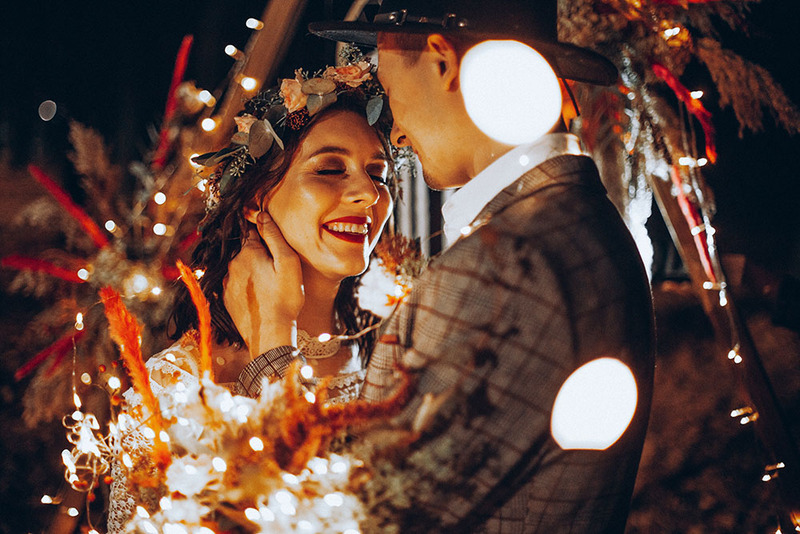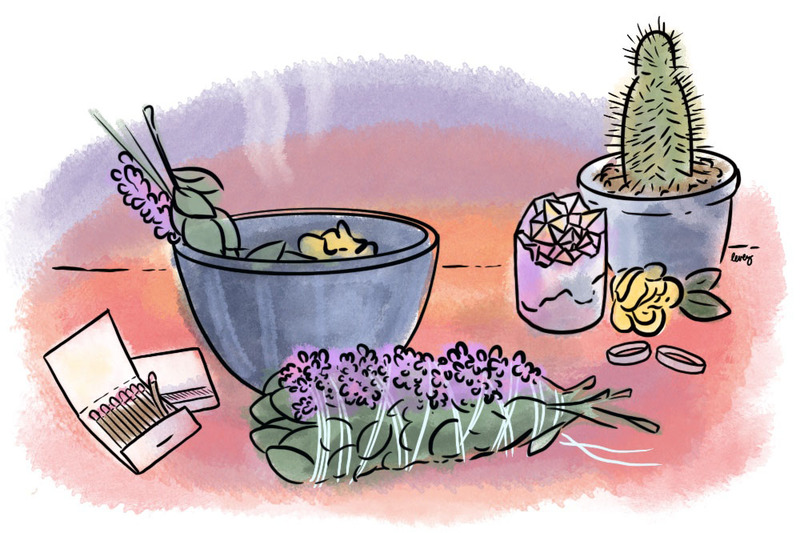AMERICAN WEDDINGS BLOG
Stay up to date with the latest wedding ceremony trends, script writing inspiration, tips and advice for first-time officiants, and news that matters to couples and wedding ministers.
Stay up to date with the latest wedding ceremony trends, script writing inspiration, tips and advice for first-time officiants, and news that matters to couples and wedding ministers.
Published Thursday, Sep. 15th, 2022

Powerful symbolism, pleasant aromatics, and deep spiritual purpose have made smudging a popular part of modern wedding ceremonies of all types and styles – from chic indoor gatherings to nature-inspired elopements on the beach.
To help you add a smudging ceremony to your own wedding, we’ve answered some of the most common questions about the ritual.
We’ll share the history and meaning behind smudging, basic ‘how to smudge’ instructions for your wedding officiant, which herbs to choose when blending your own smudge stick, bowl, or braid, and when to include a smudging during your wedding ceremony.
You’ll also find one of our favorite smudge stick recipes… So let’s dive in!

Sage is the most common ingredient used to smudge, but crystals, incense, candles, and even water are used in similar rituals for cleansing & blessing a marriage ceremony.
Smudging is a spiritual practice performed by burning sacred herbs, plants, resin, or wood to create a purifying smoke.
Smudge smoke is often used to: purify the air; bless individuals and sacred spaces; cleanse the mind and body of negative thoughts; encourage positive attitudes and actions toward others; and cultivate mindfulness and grounding.
Related: Meditation for Ministers: What is Grounding?
Smudging with smoke is the most common practice, but people also smudge with salt, crystals, and sound – which is useful in wedding venues and other spaces where fire or burning isn’t allowed.
Smudging has been used in ceremony since ancient times and originated with indigenous First Nations peoples. Many Indigenous communities still use smudging in their daily spiritual practices and at social gatherings, including in workplaces and schools.
Smudging has also been incorporated into the spiritual practices and rites of other cultures in recent years, such as the rituals of modern Pagans, including Wiccans, Eclectic Pagans, Heathens, and others.
Over time, many non-religious people have embraced the practice of burning aromatic bundles of herbs and flowers as a mindfulness exercise, rather than a spiritual or religious one. This has made the ritual a popular addition at many secular events as well, including secular weddings, funerals, and meditation groups.
Three of the traditional sacred medicines used in First Nations' and Native American smudging rituals are sweetgrass, sage, and cedar – all of which remain very popular today.
Sage is probably the most common ingredient found in smudge sticks, and there are several types of sage used for smudging, each believed to have somewhat different benefits: White sage, blue sage, black sage, and desert sage (gray sage) are the easiest to find.
As smudging becomes more widespread, additional plants and herbs have become common, including lavender, Yerba Santa (mountain balm), and Palo Santo wood sticks.
These ingredients can be used on their own for a concentrated scent and effect, or blended and braided together in different combinations.

Smudging rituals can be added to outdoor and indoor weddings of all styles and all seasons
Sage, sweetgrass, and lavender are the most common ingredients used in wedding smudge ceremonies – and it’s easy to see why!
Sweetgrass has a vanilla-like scent, which blends beautifully with the earthy green notes of sage, and the floral freshness of lavender, to fill a room with soft sweet smoke.
And these herbs and flowers don’t just smell good – they’re also believed to hold special spiritual properties that are well suited to weddings:
Sweetgrass is used in marriage blessings for its ability to purify the mind and heart of negative emotions, and to welcome positive thoughts, love, and harmonious energy. Sage is said to bring wisdom and protection to a union. Cedar encourages mindfulness and meditation in ceremony, and lavender has long been associated with good luck, serenity, love, and devotion.
When you include the smudging ritual will depend on your personal tastes, who performs or offers the smudge, and why you’d like to include it. Here are three common options.
Smudging can be done at the start of a wedding ceremony, to ‘cast’ a sacred circle or purify a ceremonial space.
A wedding officiant or elder may offer a smudge to guests to cultivate a mindful presence in the group, or they may use the smoke to cleanse the space of negative energy and spirits. Smudging at the start of the ceremony is common practice at many Pagan weddings and handfastings.
Sometimes smudging is performed during the ceremony, before a couple exchanges their wedding vows and following an invocation or reading. This type of smudging ritual is often used to ground and center a couple before they make their promises to each other.
The wedding officiant raises the smudge stick or ceremonial bowl to pass the smoke over and around the couple. This cleanses their minds and bodies of negative thoughts and words before they take their vows, and encourages them to see the good in each other as they step into marriage.
Occasionally smudging is performed as a blessing at the end of a wedding or handfasting ceremony, to prepare the couple for their first words and actions as married people.
This can be done in a couple of ways: The wedding officiant or a spiritual elder may offer the couple a smudge by holding up a ceremonial bowl of burning herbs, so that the couple can take turns ‘bathing’ themselves in the smoke, wafting the sweet smoke over their faces and bodies with their hands. Or the officiant may walk in a circle around the couple, passing the smoke over their joined hands and hearts.

As you can see, smudging is a beautiful ritual that can make a perfect addition to any wedding ceremony. Use smudging to encourage mindfulness; create a grounding presence for yourself and guests; clear away negativity and welcome good intentions, words, thoughts, and actions; or to protect and cleanse the sacred space where you hold your ceremony.
Ask your wedding officiant to share a few words about the symbolism and meaning of smudging and why you’ve chosen to include it in your ceremony. The exact wording will be unique and personal to you, depending on your reasons.
The wedding officiant might say something like this:
“It’s important to Lenore and Addy to enter into their marriage with their hearts and minds free of negative thoughts and attitudes. Before they exchange vows, they’ll share in a very old ritual called a smudging ceremony. This sacred smoke purifies the mind, the heart, the mouth, the eyes, and the ears, clearing away negativity so that they may seek out and find the good in each other.”
A short explanation or introduction of the smudging ritual will help guests feel welcome and included, and give them a better understanding of you and your partner’s values, faith, and approach to marriage.
...
for wisdom, well-being, loving words, and lasting devotion
Ingredients:
Optional ingredients:
Gather dried sage leaves, sweetgrass strands, and dried lavender flowers. Choose white sage for wisdom and protection, blue sage to banish negative energy and spirits, and desert sage for spiritual awareness and open-heartedness.

Wedding smudge ingredients, illustrated by Jessica Levey
From the article: Wedding Smudge Stick Recipe - Sage, Sweetgrass, and Lavender
Become a Wedding Officiant with Our Free Online Ordination!